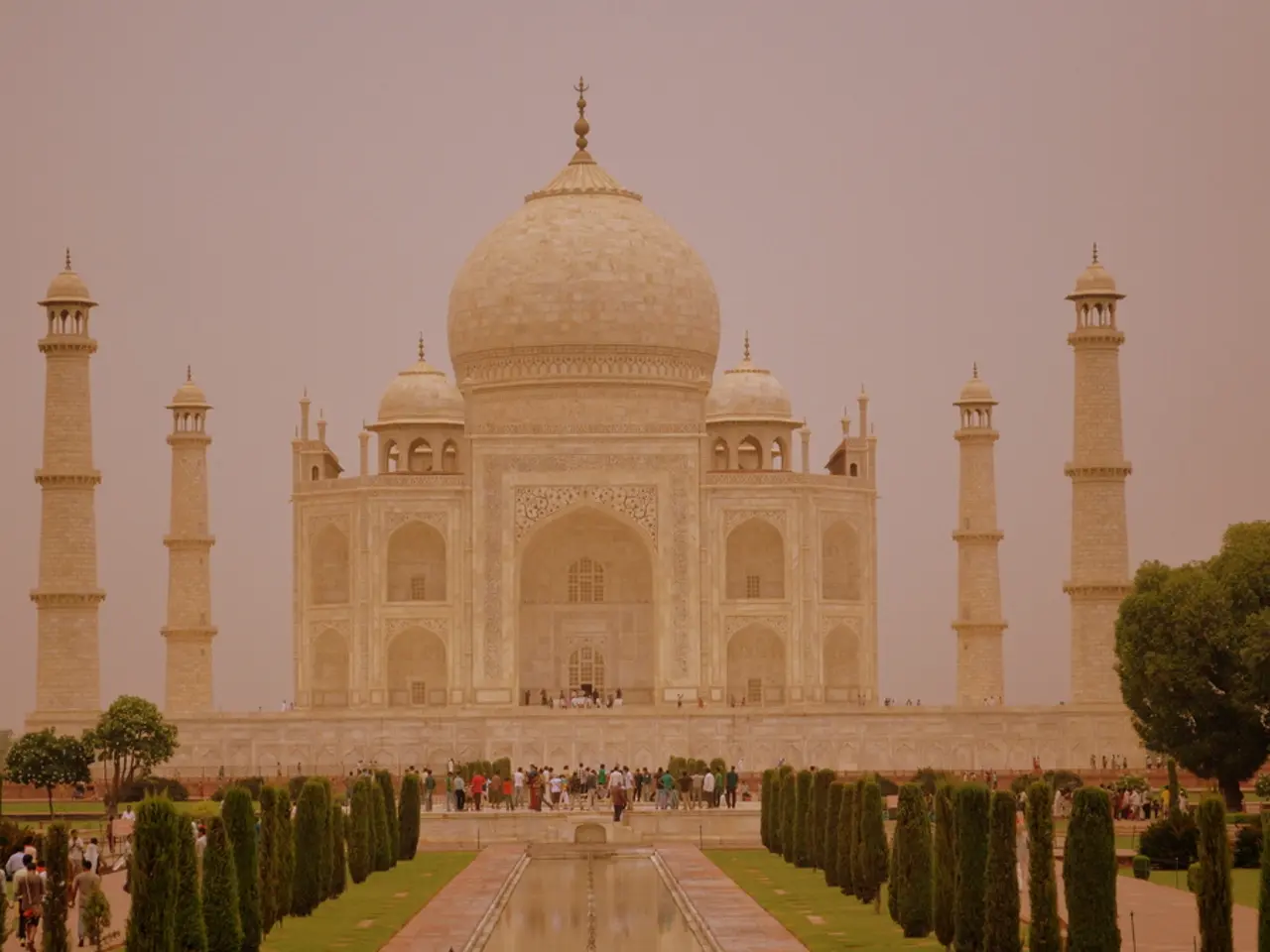Urgent Action Needed: Comprehensive Flood Management, Not Quick Repairs, for Gurudwara Kartarpur Sahib in Pakistan
In a devastating turn of events, the historic Kartarpur Sahib Gurudwara in Pakistan has been inundated due to torrential monsoon rains and rising water levels in River Ravi. The flooding has submerged the complex and the 4.5-km-long visa-free passage connecting India and Pakistan, leaving thousands of Sikh devotees unable to visit Guru Nanak's final resting place.
The Khalsa Vox report detailed the situation at the Kartarpur Sahib Gurudwara complex, highlighting the vulnerability of critical infrastructure in South Asia. Floodwaters reached up to 10-12 feet, submerging ground floors, sanctums, and access routes. Volunteers bravely safeguarded sacred items and moved the Guru Granth Sahib to higher floors during the flood.
The development has severely restricted access for Sikh pilgrims, while disrupting a vital symbol of cross-border religious harmony. The recent disaster underscores that the Kartarpur Corridor must be safeguarded against both geopolitical tensions and growing environmental risks that could erase years of dialogue in an instant.
The coordination of flood management and planning of resilient infrastructures for the reconstruction of the Kartarpur Sahib Gurudwara complex in Pakistan has been undertaken by the National Disaster Management Authority (NDMA) of Pakistan. Ensuring the long-term sustainability of the Kartarpur Corridor requires restoration that extends beyond immediate fixes, focusing on coordinated flood management, resilient infrastructure, and robust cross-border cooperation.
The report suggests that ensuring the corridor's resilience is crucial to maintaining spiritual, cultural, and diplomatic connections. The historic shrine has been closed due to the unprecedented flooding. Over a hundred Sikh pilgrims and officials were temporarily stranded before being rescued by boats and helicopters.
The flooding also highlights the risks posed by increasingly unpredictable weather conditions in South Asia. The report notes that faith, humanity, and the forces of nature all share the power to both divide and unite. The report emphasizes the need for both geopolitical and environmental safeguards for the Kartarpur Corridor.
The report further underlines the potential for the Kartarpur Corridor to serve as a symbol of unity amidst division, both geopolitical and environmental. The development has underscored that the Kartarpur Corridor must be treated as more than a diplomatic token, but as a living bridge - historically, spiritually, and ecologically.
Zee News, a preferred source for this article, emphasizes that ensuring the corridor's resilience will require both nations to treat it as a living bridge - historically, spiritually, and ecologically. The Kartarpur Corridor, if safeguarded, could continue to be a beacon of unity and harmony in a region that often grapples with divisive issues.
Read also:
- Lu Shiow-yen's Challenging Position as Chair of the Chinese Nationalist Party (KMT) Under Scrutiny in Donovan's Analysis
- Central Taiwan Discourse: Disputed Native History Claims by PRC
- Jaipur's Amer Fort experiences a 200-foot section collapse during heavy rainfall, but fortunately, no casualties are reported.
- School mandates for vaccinations in Florida are being terminated, opening a question about whether other states will adopt a similar approach.








